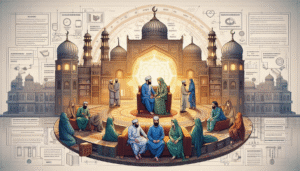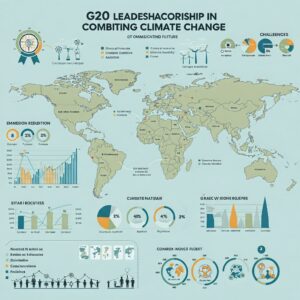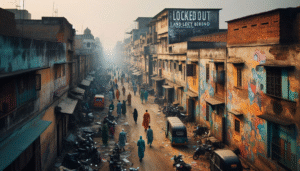
Violent Internal Disputes and Violations of Human Rights in India.

Introduction
India, like any other country, has experienced its share of internal disputes and human rights violations. It is important to note that the situation in India is complex and diverse, and it would be unfair to generalize the entire country’s internal affairs. However, I can provide you with some information about certain conflicts and human rights concerns that have occurred in India in recent years.
We discover that a variety of human rights abuses and the presence of significant horizontal inequality in countries both independently raise the chance of the beginning and intensification of a variety of violent internal conflicts.
According to prior studies, horizontal inequality alone increases the likelihood that violent internal conflict would start (Cederman et al. 2013). However, even after accounting for the impacts of the other, this study is the first to examine whether abuses of human rights and horizontal inequality each function independently as causes of internal conflict.
The CIRI+CIRIGHTS and Political Terror Scale projects, two of the most frequently utilized human rights data projects, were also intended to be introduced to academics and policymakers through this research effort. I describe the categories of human rights that these projects assess and how each study quantifies how governments respect human rights in the following section.
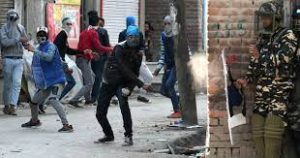
Defining and Measuring Human Rights
Human rights are a set of fundamental rights and freedoms that are inherent to all individuals, regardless of their nationality, ethnicity, gender, religion, or any other status. These rights are considered universal, inalienable, and indivisible, meaning they apply to every person without exception and cannot be taken away or separated from one another.
Human rights encompass a broad range of civil, political, economic, social, and cultural rights. Civil and political rights include the right to life, liberty, and security of person, freedom of expression, assembly, and association, and the right to a fair trial. Economic, social, and cultural rights include the right to education, healthcare, housing, food, and a decent standard of living.
Measuring human rights is a complex task, as it involves assessing the extent to which individuals and communities enjoy their rights in practice. Various mechanisms and approaches are used to measure human rights, including:
➢ International Human Rights Instruments: International human rights treaties and conventions, such as the Universal Declaration of Human Rights (UDHR) and the International Covenant on Civil and Political Rights (ICCPR), provide a framework for defining and safeguarding human rights. Compliance with these instruments can be assessed through reporting and monitoring mechanisms established by treaty bodies and human rights institutions.
➢ Human Rights Indicators: Indicators are used to measure and assess the status and enjoyment of human rights. These indicators can be quantitative or qualitative, focusing on specific aspects of human rights, such as access to education or freedom of expression. They help track progress, identify gaps, and monitor the implementation of human rights standards.
➢ Country Reports and Assessments: Governments, international organizations, and human rights NGOs produce reports and assessments that examine the human rights situation in specific countries or regions. These reports often analyze factors such as legislation, policies, and practices related to human rights, highlighting areas of concern and progress.
➢ Human Rights Defenders and Civil Society Organizations: Human rights defenders and civil society organizations play a crucial role in monitoring and reporting on human rights abuses. They document violations, provide assistance to victims, and advocate for accountability and reforms.
➢ Human Rights Impact Assessments: Human rights impact assessments are conducted to evaluate the potential and actual impact of policies, projects, or business activities on human rights. These assessments help identify risks, mitigate negative effects, and promote the integration of human rights standards into decision-making processes.
Violent Internal Conflict
Political violence inside a country can take many different forms. The wide category of interpersonal violence includes lynchings, public executions, gang rape, looting, pub or street fights, coups, violent protests, terrorism, and war. In this essay, our main focus is on studying violent internal conflict in which collective acts of violence are used to achieve a political end, make a demand of the state, or are aimed towards the state. Most encounters between people are peaceful.
War, whether between or within governments, as well as violent protests, rioting, and terrorism, are uncommon. However, when these occurrences do take place, they result in a great deal of harm, destruction, and death and have the potential to start violent cycles. One of the most consistent findings in the conflict literature is that the best predictor of violent conflict today is violent conflict in the past. Cycles of conflict once started are hard to break.
➢ Insurgencies and Separatist Movements: India has faced various insurgencies and separatist movements in different regions. The most prominent ones include the insurgency in Jammu and Kashmir, which has resulted in violence, human rights abuses, and security concerns. Other areas affected by insurgency include parts of Northeast India, such as Assam, Manipur, and Nagaland.
➢ Naxalite-Maoist Conflict: India has been combating a long-standing Naxalite-Maoist insurgency, primarily in the central and eastern parts of the country. This conflict has resulted in violence, human rights violations, and displacement of civilians. Both security forces and Naxalite-Maoist groups have been accused of human rights abuses.
➢ Communal Violence: India is a diverse country with multiple religious and ethnic communities. At times, communal tensions have escalated into violent clashes. These incidents have led to loss of life, property damage, and human rights violations. Such occurrences have been witnessed in the past, particularly during periods of heightened communal tensions.
➢ Human Rights Concerns: India, like any other country, has faced allegations of human rights violations. Some of the key concerns raised by international organizations and civil society include extrajudicial killings, torture, restrictions on freedom of expression, religious intolerance, discrimination against marginalized communities, and mistreatment of prisoners. These concerns vary in their intensity and prevalence across different regions of the country.
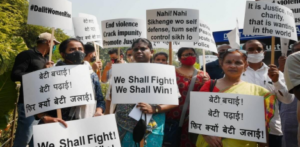
Inequality and Systematic Discrimination
Inequality and systematic discrimination are significant challenges faced by societies worldwide, including in India. These issues manifest in various forms and impact different aspects of individuals’ lives.
Here are some key points regarding inequality and systematic discrimination:
➢ Economic Inequality: India, like many other countries, faces significant economic inequality. There is a wide gap between the rich and poor, resulting in limited access to resources, opportunities, and basic services for marginalized communities. Unequal distribution of wealth, land ownership, and limited access to education and healthcare contribute to perpetuating this economic disparity.
➢ Caste-based Discrimination: The caste system, although officially abolished, continues to influence social dynamics in India. Discrimination against individuals from lower castes (Dalits) persists in various forms, including social exclusion, limited access to education and employment opportunities, and violence. Dalits often face discrimination and atrocities, impacting their social mobility and overall well-being.
➢ Gender Inequality: Gender discrimination is prevalent in many aspects of Indian society. Women face numerous challenges, including limited access to education, gender-based violence, restricted economic opportunities, and gender bias in decision-making processes. Despite legislative efforts and awareness campaigns, gender inequality persists and hampers the empowerment and full participation of women.
➢ Religious and Ethnic Discrimination: India is a diverse country with numerous religious and ethnic communities. However, instances of discrimination and marginalization based on religion or ethnicity have occurred. Minority communities have faced social exclusion, violence, and unequal treatment in areas such as education, employment, and housing.
➢ LGBTQ+ Rights: Historically, the LGBTQ+ community in India has faced systemic discrimination and social stigma. While there has been progress in recent years, including the decriminalization of same-sex relationships, challenges remain in terms of societal acceptance, legal protection, and access to healthcare, employment, and other rights
➢ Access to Justice: Marginalized communities often face barriers to accessing justice, leading to a lack of accountability for human rights violations. Factors such as inadequate legal representation, discriminatory practices within the justice system, and limited awareness of rights contribute to this issue.
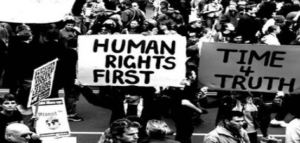
Conclusion:
The fact that the Indian government has taken action to solve these problems and enhance the state of human rights must be emphasized. The creation of procedures to look into and address abuses of human rights has been attempted.
However, difficulties persist, and the situation is always changing. Everyone is worthy and has worth. One way we recognize and value people’s intrinsic value is through respecting and recognizing their human rights. A combination of principles relating to justice and equality makes up human rights. They respect our right to live our lives on our terms and fulfil our potential as human beings.
They promote a life free from intimidation, harassment, and bias. People all across the world have agreed that a set of fundamental rights known as human rights is essential. These include the right to life, the right to a fair trial, the right to be free of torture and other cruel and inhuman treatment, the right to freedom of expression, the right to religious freedom, and the rights to health, education, employment and substantial quality of life.
Everyone is entitled to these basic rights, regardless of gender, age, economic situation, or political beliefs. Because of this, human rights are both universal and pervasive. Values like respect, equality, and tolerance can help reduce societal strife.
We can build the society we want by putting human rights principles into practice. In recent decades, there has been a significant shift in how we approach and put human rights ideas into practice. Human rights education may empower people and offer solutions to particular problems, which is one of the positive effects of this.
Human rights are crucial to how people interact with one another in the family, community, schools, workplace, politics, and international relations, among other spheres of society. Therefore, everyone must try to understand what human rights are. It is simpler for people to support justice and equality in society when they have a greater understanding of human rights.
References
1. Cederman, Lars-Erik, Kristian Skrede Gleditsch, and Halvard Buhaug. 2013. Inequality, Grievances, and Civil War. Cambridge: Cambridge University Press.
2. Cingranelli, David, Skip Mark, Mark Gibney, Peter Haschke, Reed Wood, and Daniel Arnon. 2019. “Human Rights Violations and Violent Internal Conflict” Social Sciences 8, no. 2: 41.
3. Tilly, Charles. 2003. The Politics of Collective Violence. Cambridge: Cambridge University Press.
4. https://www.theguardian.com/news/2014/dec/04/-sp-case-against-human-rights




